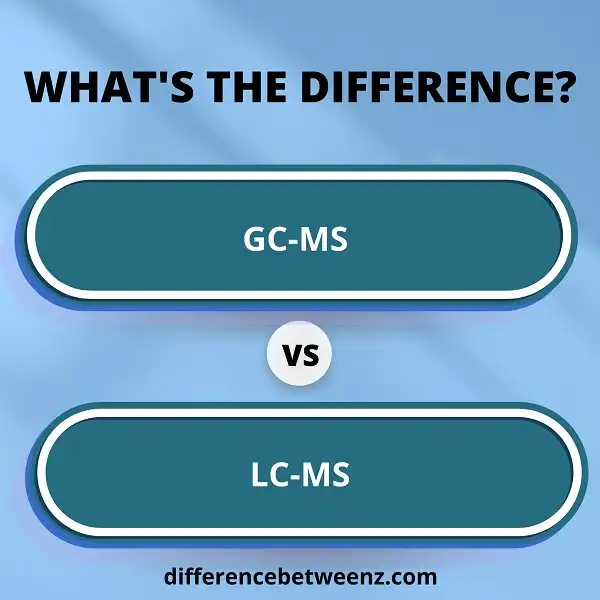MS systems are commonly used in many different industries for a variety of applications. Two of the most popular MS systems are GC-MS and LC-MS. Both systems have unique benefits that can make them ideal for specific tasks. In this blog post, we will explore the difference between GC-MS and LC-MS. We will also look at some of the applications where each system is best suited. Finally, we will discuss the advantages and disadvantages of each system.
What is GC-MS?
GC-MS is a analytical technique that combines the features of gas chromatography and mass spectrometry. GC-MS can be used to identify unknown compounds, quantify known compounds, and investigate the structure of unknown compounds. GC-MS also has the ability to detect very low levels of contaminants.
The GC part of GC-MS refers to gas chromatography, which separates compounds based on their volatility. The MS part refers to mass spectrometry, which identifies compounds based on their mass-to-charge ratio. GC-MS is a powerful tool that is used in a variety of industries, including environmental testing, forensics, and pharmaceutical research.
What is LC-MS?
LC-MS is an analytical technique used to identify and quantify the presence of various compounds in a sample. The technique combines the principles of chromatography with mass spectrometry to provide highly sensitive and accurate results. LC-MS has a wide range of applications, including the analysis of environmental samples, food contaminants, and pharmaceuticals. The LC-MS technique is also used in forensic science and toxicology. Due to its versatility and accuracy, LC-MS has become one of the most widely used analytical techniques in the world.
Difference between GC-MS and LC-MS
- GC-MS and LC-MS are two of the most common methods of analysis used in modern laboratories. GC-MS, or gas chromatography-mass spectrometry, is a technique that is used to separate and identify individual compounds in a sample.
- GC-MS works by injecting a sample into a column of GC, where it is then separated based on its chemical properties. The individual compounds are then ionized and detected by the MS. LC-MS, or liquid chromatography-mass spectrometry is a similar technique that is used to analyze liquid samples.LC-MS works by injecting a sample into a column of LC, where it is then separated based on its chemical properties.
- The individual compounds are then ionized and detected by the MS. Both GC-MS and LC-MS are powerful tools that can be used to analyze a wide variety of samples. However, GC-MS is typically used for volatile or semi-volatile compounds, while LC-MS is better suited for analyzing non-volatile compounds.
Conclusion
The two main types of mass spectrometry are gas chromatography-mass spectrometry (GC-MS) and liquid chromatography-mass spectrometry (LC-MS). GC-MS is used to analyze volatile compounds, while LC-MS can be used to analyze both volatile and nonvolatile compounds. In general, LC-MS is considered to be more sensitive than GC-MS. However, GC-MS is better at identifying specific molecules. If you need a precise identification of a compound, GC-MS would be the best option.


